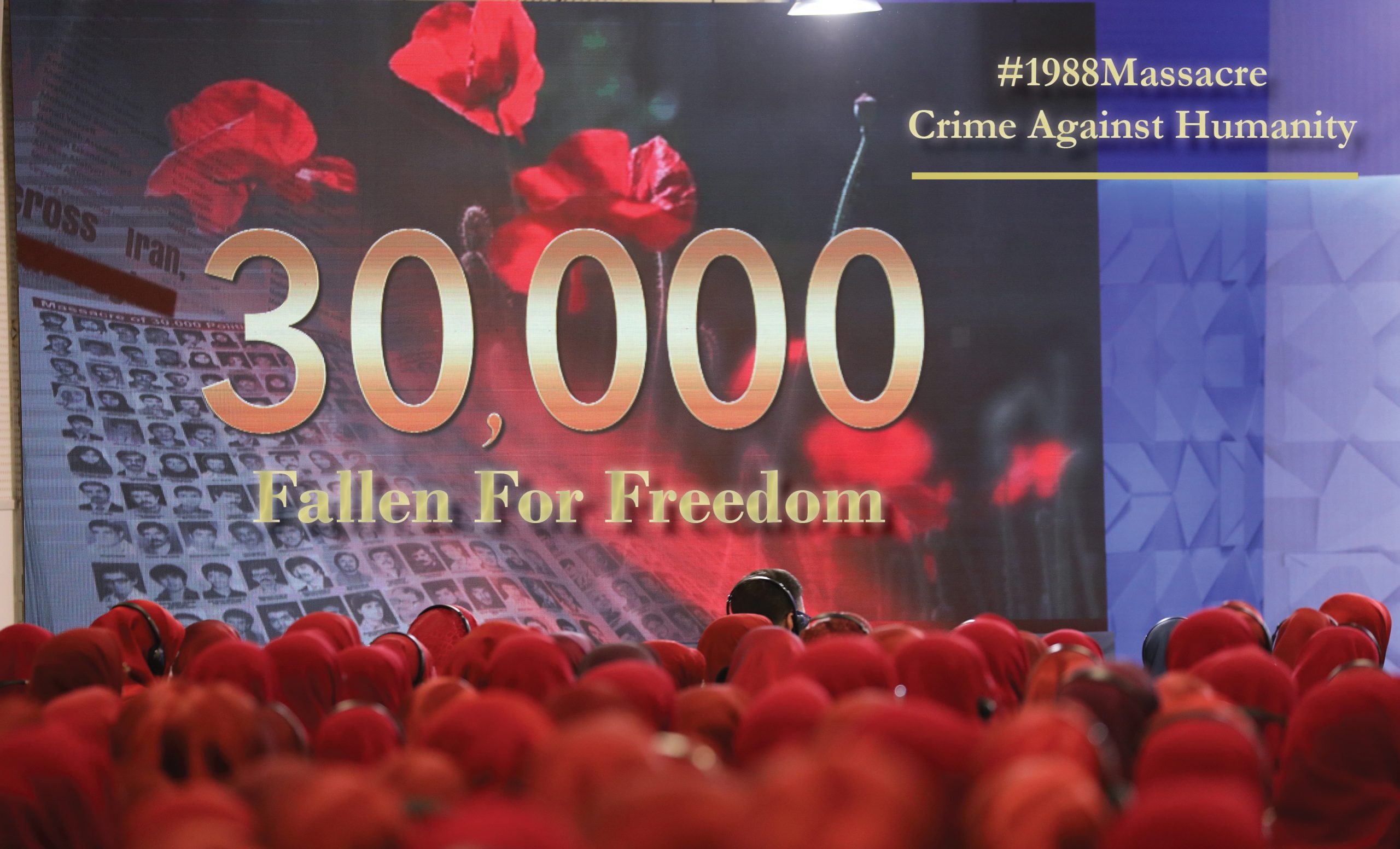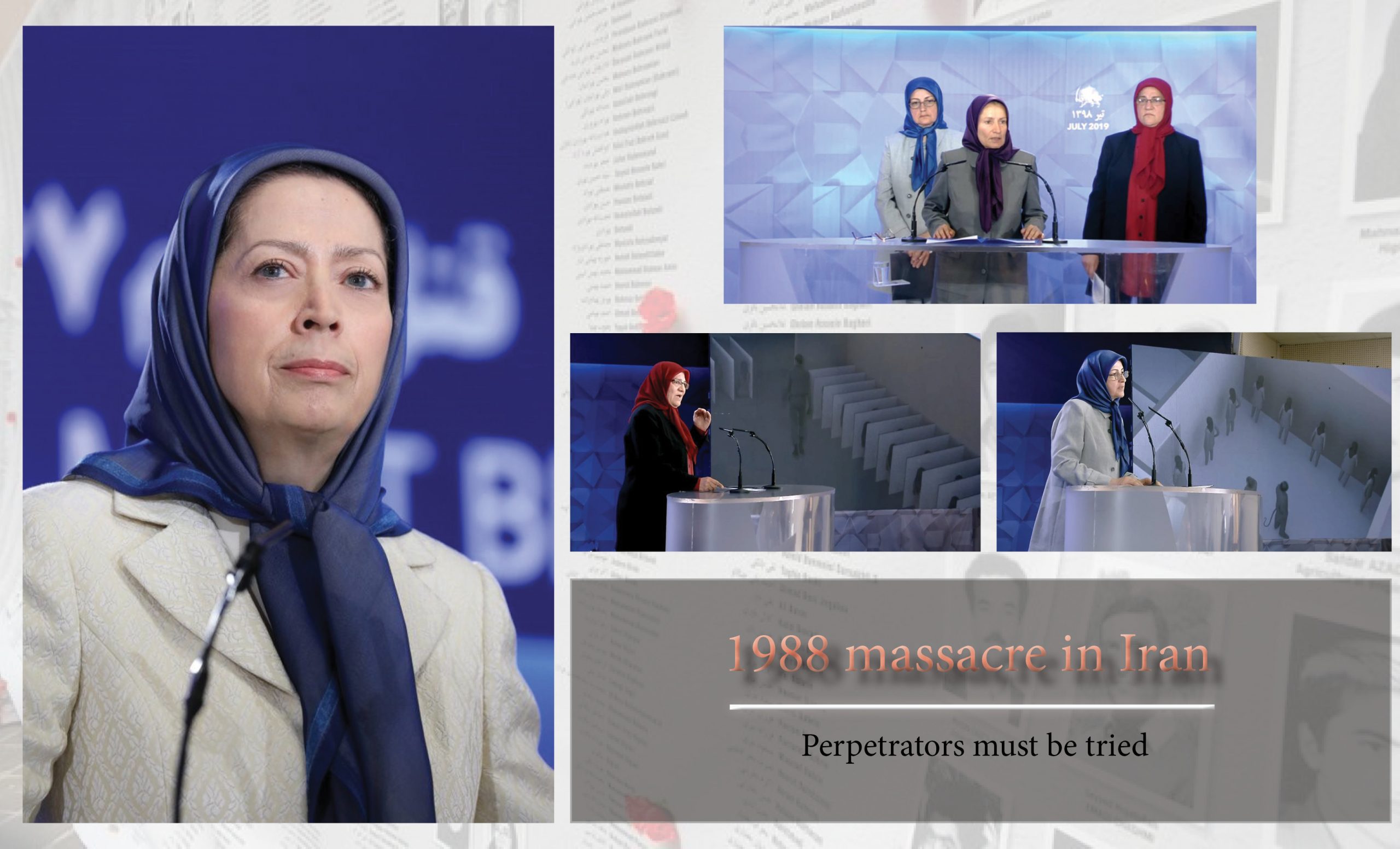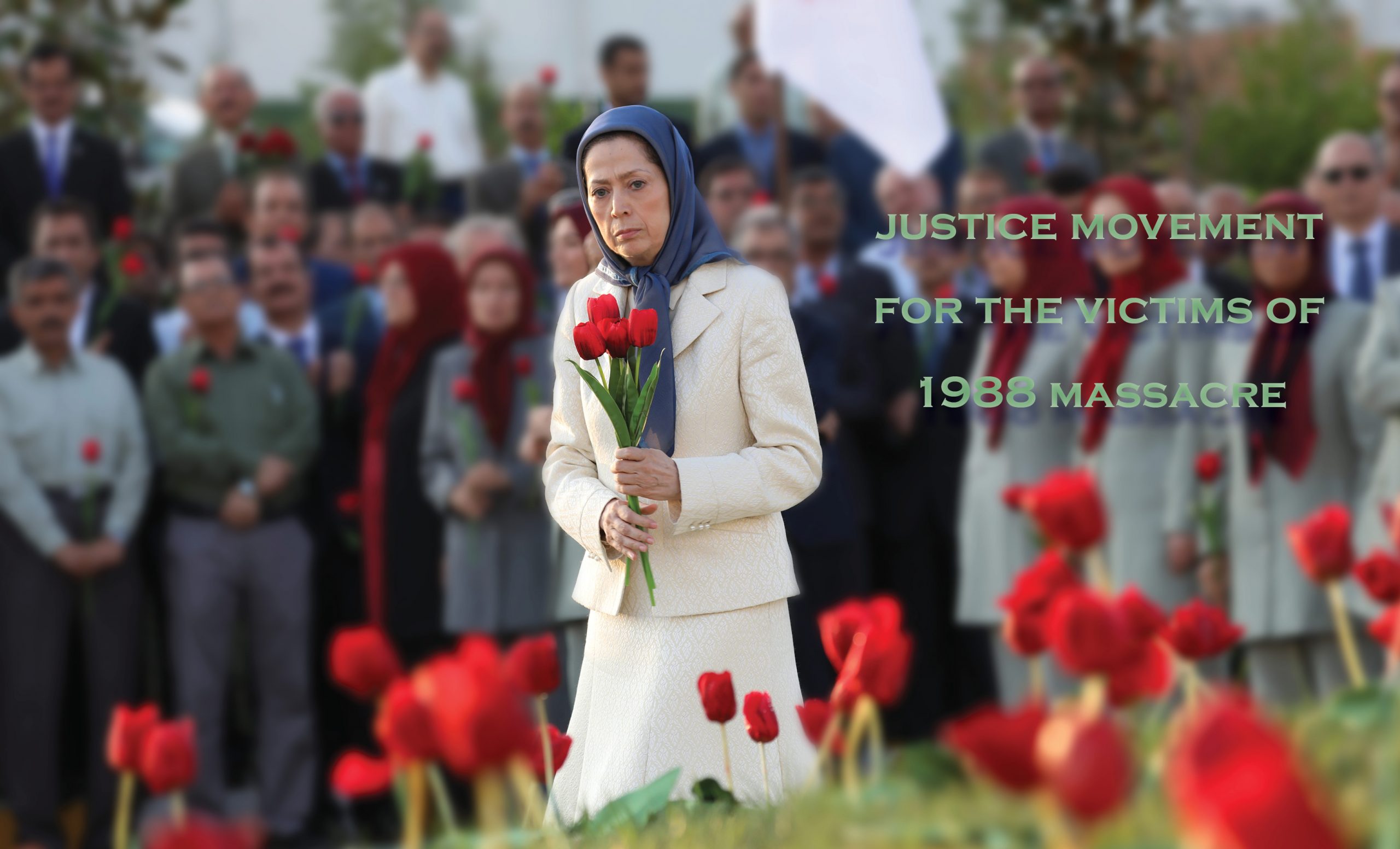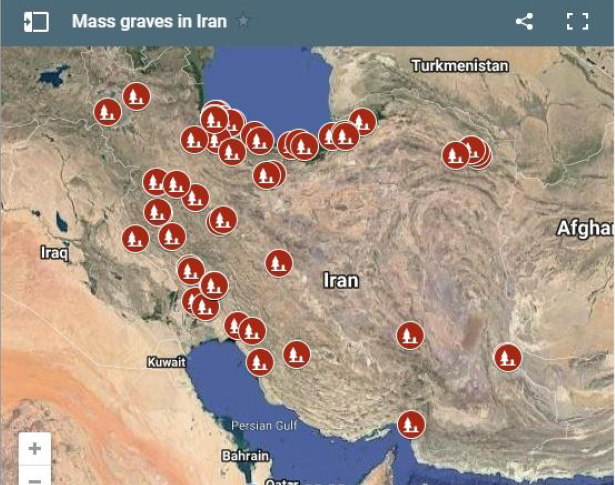
By Navid Felker
Iranian authorities killed 400-500 prisoners a day, a survivor of Iran’s brutal prison recalls.
In an exclusive interview with Daily Star Online, former Iranian political prisoners [MEK supports] spoke out about their horrifying experiences in the torture chambers of the Iranian regime.
Ahmad [former prisoner (PMOI, Mujahedin-e Khalq or MEK)] spent 10 years in prison between 1981 and 1991, after being arrested for supporting the MEK/PMOI.
Ahmad said to Daily Star: “Iranian regime killing 400-500 protestors a day. All of the prisoners were taken to a room and asked: ‘Who do you support?’”
Those who said MEK/PMOI were taken off and executed.
“There were 150 in my section, 90 were executed. In another section near mine, only 13 out of 207 survived.”
Ahmad’s wife Farzanir lost five members of her family to the regime.
One brother was just 16 when he was arrested in 1981. After searching every prison in vain to find him, one day two Revolutionary Guard Corps (IRGC) soldiers came to the family home.
Farzanir said: “They handed us a bag of clothes and said ‘these are your son’s clothes, we killed him and we want money for the bullet.”
Her mother was so traumatized that she refused to speak for three years.
One brother was tortured so badly that he lost nervous control of many parts of his body.
Another victim, who asked not to disclose his name, said: “For one of the tortures, I was stretched out on my brother’s chest on a torture rack, and my feet and legs were lashed 150 times.
“I was made to beat my brother, and when I wouldn’t comply, prison guards beat us both harder.”
He says he was also suspended from the ceiling of a prison cell with eight others in an unbearable position.
The former prisoner said while in jail he saw scenes he would never forget.
“Bodies were dumped behind Ward 4 of Evin Prison. Prisoners were lined up and shot, some 30-40 at a time. If any of the prisoners survived the first bullets they were shot in the throat by the guards.
“Then the bodies were dumped in the back of a Mercedes Benz lorry, and as it drove away, all you could see was blood pouring out of the back of the lorry,” he told the Daily Star.
Ahmad and Fazanir’s testimonies are one of many accounts that have documented the horrific crimes the Iranian regime committed in its prisons.
On August 9, 2016, the son of Hossein Ali Montazeri, the former heir of regime founder Ruhollah Khomeini, released an audiotape in which his father acknowledged that the massacre took place and had been ordered at the highest levels of authority in Iran.
Following this revelation, the Iranian Resistance launched a vast international campaign called “justice movement for the victims of the 1988 massacre” across the world. This campaign aimed to draw attention to this horrific crime, which many consider the biggest crime against humanity after the holocaust.
In this regard, on the sidelines of the annual “Free Iran” event of the Iranian Resistance, a conference was held on the issue of the 1988 massacre at Ashraf 3, the headquarter of the People’s Mojahedin Organization of Iran (PMOI/MEK).

A panel of experts and witnesses are discussing the 1988 massacre
Many witnesses and survivors of the 1988 massacre told about their experience in the mullahs’ regime prisons.
“I was in the regime’s prisons for six years. The Revolutionary Guards (IRGC) arrested me while I was pregnant. I was taken to Evin Prison and the torture chambers. I was transferred to Ward 209. In the cell, I saw four torturers torture my husband in front of me. They also tortured me in front of him,” said Ms. Kobra Jokar, member of the MEK.
“A few days later, they executed him with 75 others. The torturer said, ‘I wanted him to never see his son.’ The regime had executed 50 pregnant women, including Masumeh, the sister of Mrs. Maryam Rajavi. They took me to a hospital and quickly brought me back to prison even though I was very ill,” she added.
“In prison, there was no doctor or medication for the children. In the public ward, there were only 15 minutes of warm water per day, which we had to use to give the children a bath. Many of these children had lost their parents,” Ms. Jokar continued.
“The torturers even interrogated the children. They had strapped a small child to a chair in a dark room and tortured her so she would reveal the names of her mother’s friends,” she said.
“I managed to escape prison in 1987. One year later, all of those ladies who shared the cell with me were executed in the 1988 massacre,” Ms. Jokar added.
Another witness Ms, Hengameh Haj Hassan, member of the MEK said: “The roots of our hopes and faith in our leaders helped us overcome the dark times in prison and to fight for freedom,” she concluded.
“I was a nurse in Tehran. In 1981, I was arrested because I was a MEK supporter. We were charged with helping the people who were injured by the IRGC,” said Ms. Hengameh Haj Hassan.
“In prison, we were subjected to severe tortures. Insomnia, packed cells, sleeping in coffins were what we had to endure,” she added.
“We were taken to the cages. These were small partitions where you could only squat. You couldn’t move, you couldn’t even cough or sneeze. If we moved, we were tortured. Our eyes were blindfolded. My eyesight has been degraded and my back was injured. I was operated on five times and yet I still have not recovered,” Ms. Haj Hassan continued.
“When we came out of the ‘cages,’ our friends didn’t recognize us. When we were in the cages, the torturers used any excuse to torture us,” she emphasized.
“The torturer told us that we would die here. We were only given three minutes per day to go to the bathroom. We couldn’t even brush our teeth. The food they gave us was scarce and very dirty. At night, when we were allowed to sleep, they would turn on loudspeakers and play the regime’s mourning songs,” Ms. Haj Hassan added.
“The torturers sought to break our will and force us to turn our backs on our struggle. I decided that I would teach them a lesson and show them who we were. My friend Shekar was arrested with me, and she was executed in 1988 after suffering torture and the cage,” she continued.
“I decided to prepare myself for very hard days. I meticulously organized my daily schedule. I rehearsed all my school courses, all the poems I knew, all the songs. I had a physical exercise program. We weren’t allowed to move, but I exercised in my mind,” Ms. Haj Hassan said.
“At night, when we couldn’t sleep due to the loudspeakers, I trained myself to shut down those noises and take myself to pleasant places in my memories,” she added.
“The hardest times were the feeling of loneliness. I thought of God, and I thought of my leader, Massoud Rajavi. I spoke to him, and this way, I didn’t feel alone anymore,” Ms. Haj Hassan continued.
“The torturers thought they would break our will through torture. However, they only made us stronger, as we understood that this proved what we were doing was right,” she added.
“In prison, we considered ourselves PMOI (MEK) representatives, and we deemed it our responsibility to defend their values. When I came out of prison, the first thing I did was to re-join my organization. This is a path that will continue until the end,” Ms. Haj Hassan concluded.
At this same conference Mrs. Maryam Rajavi, the President-elect of the National Council of Resistance of Iran (NCRI) said in her remarks, “The time has come for the international community to end three decades of impunity for the clerical regime leaders in Iran and to hold them accountable for their crimes. The time has come for referring the dossier of human rights violations in Iran, particularly the executions of the 1980s and the 1988 massacre, to the UN Security Council. The time has come for Khamenei and his accomplices to face justice for committing crimes against humanity. The time has come for the United Nations to launch an international fact-finding mission on the 1988 massacre in Iran. And the time has come for the world to recognize the right of the people of Iran to resistance and struggle to overthrow the mullahs’ religious fascism. I urge the international community, the UN Security Council, the UN Human Rights Council, and its member states, as well as other relevant United Nation agencies, the European Union, and all advocates of human rights and justice, to rise up and to end the impunity of those responsible for the 1988 massacre.”

Mrs. Maryam Rajavi: The time has come for the international community to end three decades of impunity for the clerical regime leaders in Iran
“Our plan for future is an Iran without the death penalty and devoid of torture and our plan is putting an end to torture and all forms of human rights abuse in Iran,” said Mrs. Rajavi and emphasized commitments of the Iranian Resistance for a future Iran without the death penalty.
In her statement on abolition of death penalty Mrs. Rajavi declared that “The Iranian Resistance declared years ago that it calls for abolition of death penalty and an end to torture and all forms of rights abuses in Iran, our plan is to revive friendship, conciliation, and tolerance, and to put an end to the mullahs’ religious decrees. We reject the inhuman penal code and other abusive laws of this regime. We believe Retribution is an inhuman law and we advocate laws that are based on forgiveness, compassion, and humanity.”
Background
The 1988 Massacre was the most horrific crime of the clerical regime ruling Iran.
At the end of July 1988, Iran’s regime summarily and extra-judicially executed tens of thousands of political prisoners held in jails across Iran. The massacre was carried out on the basis of a fatwa by the regime’s Supreme Leader Ruhollah Khomeini. Death Commissions were formed in more than 70 towns and cities. More than 30,000 political prisoners were massacred in Iran in the summer of 1988. Death Commissions sent victims to the gallows after mock trials. The vast majority of the victims were members of the main opposition People’s Mojahedin Organization of Iran (PMOI), also known as the Mujahedin-e Khalq (MEK).
The perpetrators of this crime against humanity have never been held accountable. Worse still, some have been promoted to the most senior positions of the Iranian government and judiciary. A panel of experts and witnesses are discussing the 1988 massacre and the need for international prosecution of the perpetrators on Monday, July 15, 2019, Day 5 of the Free Iran convention at Ashraf 3, home to the MEK in Albania. We’ll be updating this page with the latest from the panel.

Mass graves in Iran
The facts:
• More than 30,000 political prisoners were massacred in Iran in the summer of 1988.
• The massacre was carried out on the basis of a fatwa by Khomeini.
• The vast majority of the victims were activists of the opposition PMOI (MEK).
• A Death Committee approved all the death sentences.
• Ebrahim Reisi, a member of the Death Committee, is the current head of the judiciary.
• Alireza Avaei, a member of the Death Committee, is today Hassan Rouhani’s Justice Minister.
• The perpetrators of the 1988 massacre have never been brought to justice.
• On August 9, 2016, an audiotape was published for the first time of Khomeini’s former heir acknowledging that that massacre took place and had been ordered at the highest levels.







